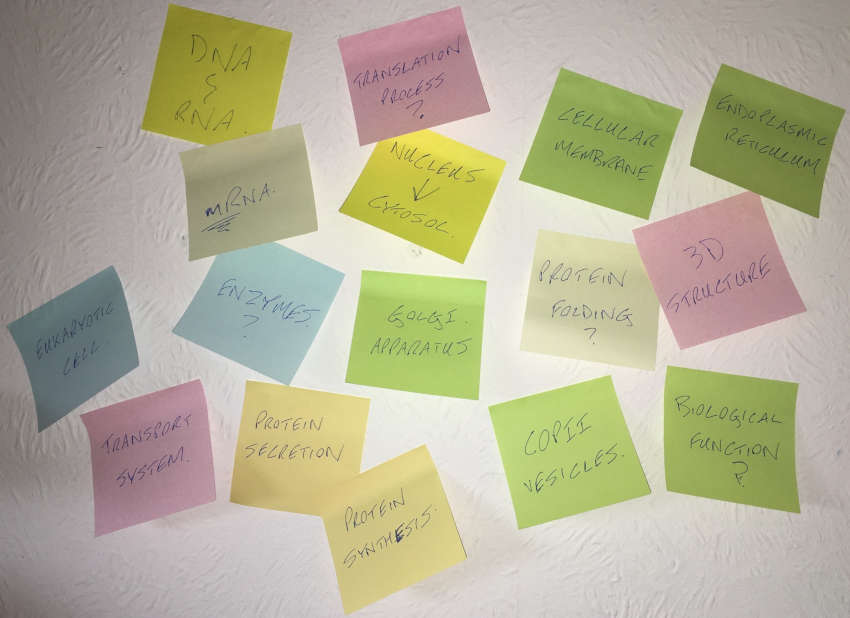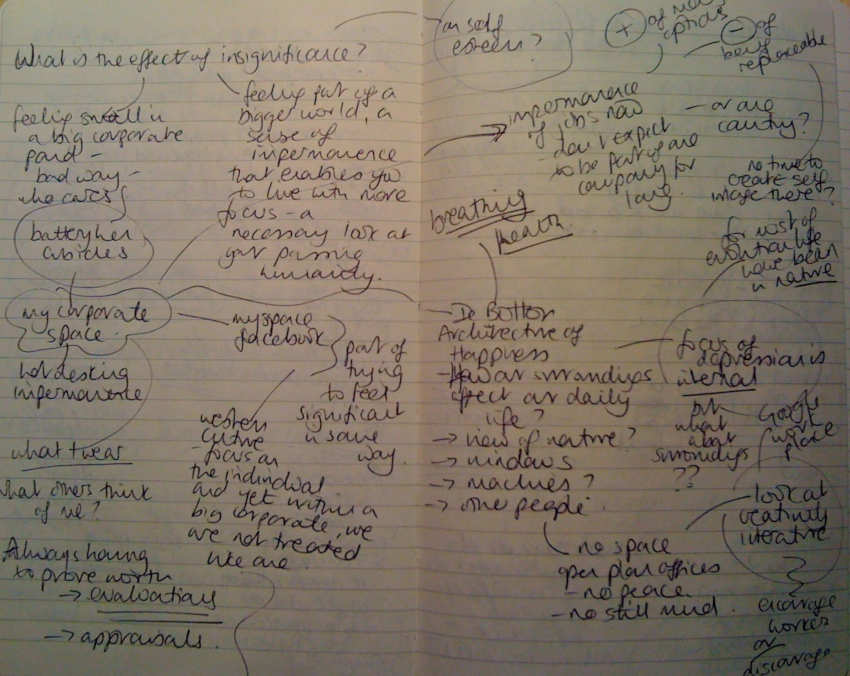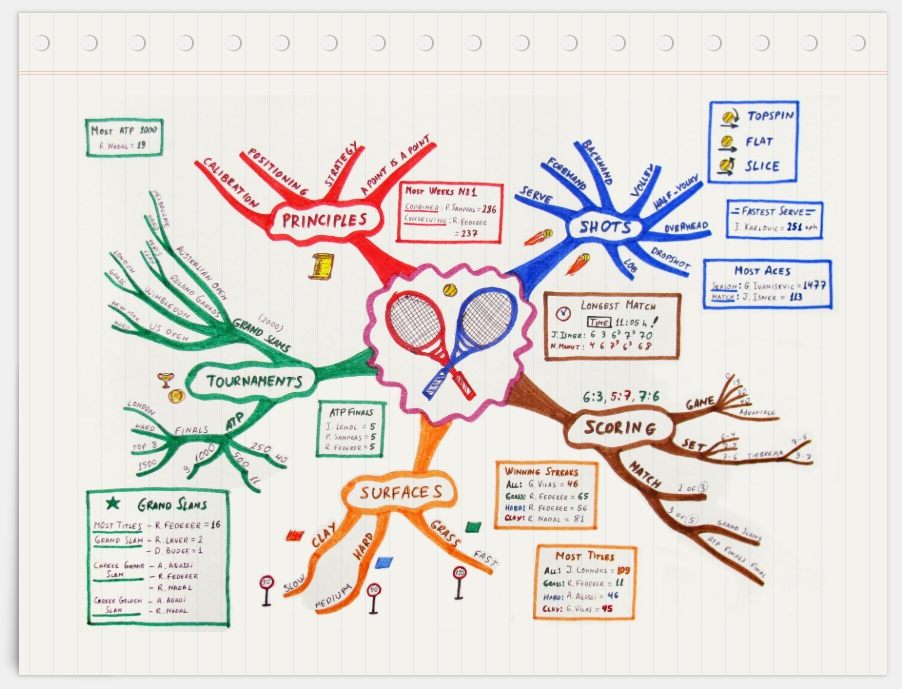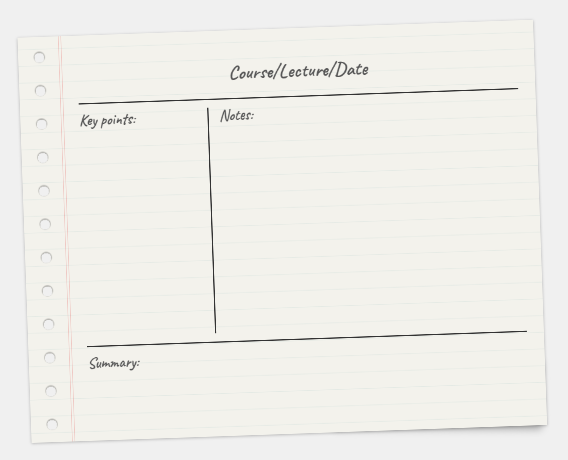Getting Started
When you receive your assignment you might feel overwhelmed and unsure how to start the process.
However your confidence will build when you know what to do and how to do it.
By following our step by step guide to planning and researching your essay, you can ensure an appropriate and thorough research process.
Preparing for Assignments
The planning of an assignment is as important as the writing.
Good assessments are well planned, well structured, clear and logical pieces of reasoning.
Without a clear plan for your assignment, you can feel overwhelmed, leave out important aspects of the assignment or miss the point entirely.
Scheduling for Assignments
It is important to be organised with both your time and resources when planning a written assessment.
It might be worth drawing up an assessment timeline to help manage your assessment and balance it with the rest of your workload, to ensure that you have enough time to dedicate to the necessary research steps.
By developing a task timeline to help achieve your goals, you are less likely to be overwhelmed by the task.
Steps in the Writing Process
At university, written assessments are primarily used for your marker to assess your understanding, your engagement with complex ideas and how you communicate them.
There are very distinct checkpoints in the development of any assessment, from the preparation right through to using feedback.
The planning phase of your research should take at least the same amount of time as the writing. The early planning stages will ensure a clear, logical structure to your argument, a chance for you to embed your own ideas and be certain that you have not omitted any important information. It will also reduce your stress and help you manage your time better. By following the seven step process, you can guarantee that you have applied the necessary time and effort to your research, and hopefully, you will see this reflected in your results.
The writing cycle should:
- Establish an appreciation of what the question and assessment brief are asking of you,
- Help you gather your ideas and make effective notes on credible, academic information sources.
- By organising your research process in this way, the structure of your assignment and the development of your ideas should flow effortlessly.
- Drafting, reviewing and proofreading are required steps to guarantee quality control pre-submission.
- Reflecting and actioning feedback, post submission, will facilitate improvement and progression.
-
Understanding your task and title
Academic writing is about making an answer, not finding an answer. Typically, it provides an answer to a question based on a considered exploration of the issues, and good writing exhibits a reflection of our own thinking and not just the facts. Each person in your class will present a different version of the assessment based on their understanding and their own thoughts. There is never any one right answer. However, in order to answer the question you need to appreciate what you are being asked to do.
Think about the point of the assignment. Why are you being asked to write it and how does it relate to your module? Can you explain what you are being asked to write in your own words?
Summative Assessment & Learning Outcomes
Most written assessments are set as a type of summative assessment. This means that the marker will be typically assessing your learning at the end of a module. This does not mean that you must write everything that you have learned during the module. Rather, it means that you should demonstrate and awareness of the context of your assignment within the learning outcomes of the module.
Interpreting your title and brief
In your module handbook you will find your assessment title and brief. The assessment title will outline the topic and focus of the assignment and the scope, the remit, or circumstances within which the assignment must be addressed. The assessment brief will outline the nature and format of the assessment. It will include the word count, referencing style, assessment weight, submission date and anticipated feedback date for the assessment.
When writing essays in particular, you must also pay close attention to the essay question or title. Essay titles contain instructional words or terms that will help you understand what you are required to do and the structure you need to adopt to answer the question relevantly.
Considering your rubric
The assessment criteria or rubric will detail the grading ranges and a description of the skills that must be demonstrated to achieve the grades. Look at your rubric and understand where the potential marks lie. You cannot be awarded marks for anything outside of these touch points. Some assessments will test your ability to research a topic, others will be focused on your ability to critique a particular subject. Read the assessment criteria to see exactly what your lecturer wants from you. Keep referring back to the criteria as you write and review your assessment to make sure you are meeting the requirements.
Generic example of assessment rubric Range Description 80-100 There is evidence of exceptional knowledge of the topic demonstrating independent research. The exploration is insightful, demonstrating critical thought. The question is addressed thoroughly and the work is persuasive and well structured. the presentation is of a high standard. Referencing is excellent and spelling, grammar and punctuation is exemplary. 70-79 There is evidence of a well developed knowledge of the topic. The exploration displays good analysis and evaluation. The student has addressed the question thoroughly, and has communicated clearly and effectively. The presentation is of a high order, with consistent and accurate. 60-69 There is evidence of a firm sound knowledge. The exploration demonstrates appropriate critical and analytical skills, showing an appreciation of the complexity of the idea. The question has been answered convincingly. The writing is well structured. There presentation is very good, demonstrating consistent and appropriate use of referencing, grammar, punctuation and spelling. 50-59 There is evidence of sound knowledge. The exploration demonstrates critical and analytical skills. The question is addressed. The structure is orderly. The presentation includes appropriate use of referencing, grammar, punctuation and spelling. 40-49 There is evidence of satisfactory knowledge of the topic. The exploration shows evidence of an ability to describe and analyse main issues. The answer to the question is satisfactory. The structure is adequate. The presentation demonstrates sufficient conventions in referencing, grammar, punctuation and spelling. 35-39 There is evidence of limited knowledge of key principles. The exploration is incomplete. The answer is inadequate. There is some attempt at structure. The presentation is poor. There is inadequate attention to referencing, grammar, punctuation and spelling, 0-34 The depth of knowledge is inadequate. The exploration is superficial. The question has not been addressed. The presentation does not follow the conventions for referencing. There are serious issues with punctuation, grammar and spelling. -
Planning and Gathering your ideas
When writing it is very important to be able to clearly define what it is that you think. There are lots of techniques to help you gather your thoughts and capture your initial ideas on a topic. See below for three examples on how to capture your initial ideas on a topic area.
Brainstorming
Brainstorming involves capturing all ideas that you believe are relevant to the question. Write down all ideas, concepts or important questions you can think of. Use post its to think freely and generate ideas. Put each idea on a separate post it.
Take what you have written and group together any ideas that are related to each other.
Review each group and try to define the main concept that links them. Think about whether you have the evidence to support each idea or concept, or whether you need to do more research.
This method can help you to identify the main themes from your research and can prompt you to think about what the most important concepts areas and how to best structure your response.
Example of brainstorming

Free writing
This simple technique is great to get you started. Write down your question and write without any constraint.
Do not worry about structuring your ideas. Just dump all of your ideas onto your page , and give yourself time to reflect on the question, your learning and your module.
This is a great way to capture what you already know about your subject, and you will be surprised how much you know. Look over what you have written and highlight the common themes of areas.
You may discover where you have gaps in your learning and understanding, and where you might need to do reading.
By appreciating your understanding of the question, you can then organise your thoughts into a more cohesive structure.
Example of free writing

Mind Maps
Mind maps are a great way to visualise your ideas. You can either draw your own mind map, or use a mind map app like MindView.
Start by writing your assessment title in the middle of your page. Consider your assessment question and draw branches to ideas, themes, concepts and theories that you think might be relevant to answering it.
Draw more branches from these thoughts, and keep adding concepts until you feel like you have explored the question in full.
This is a great way to visualise related content and build connections between your ideas.
As you read add new ideas to your map, developing a hierarchy of ideas and relationships.
Example of Mindmap

-
Reading and Making Effective Notes
Active Reading
Active reading and note making are fundamental skills for university, and you will need to approach your reading in a very different way than before. You might get weekly reading for seminars or tutorials, and you will be expecting to do independent reading for assignment research. So, approach your reading in a strategic way to help manage your reading workload.
When reading to produce a written assessment, use your reading list as guidance. However you must go beyond the reading list and select your own reading material and evaluate how you can best utilise the literature for your assessment. The quality of your information sources and how you interact with them is very important.
Note Making
Making notes is an important learning strategy, given the large amount of information that you will be expected to engage with and process. Generally there are two purposes for taking notes:
- To support your learning during classes
- To keep a record of information to facilitate assessment.
The purpose of notes for writing is to record information and ideas, but also to express questions that need to be explored, document citations, capture information to support your argument and to help keep you outcome-focused.
Your notes should be unique creations that summarise your thinking, learning, understanding, and questioning. Making effective notes is a process of reviewing, connecting, examining, and synthesising.
You will have to be selective in the information you note, and this will help you develop an original approach to your writing. When summarising you are processing information at a deeper level, and this helps when critically examining the literature.
Thorough source notes are also great for helping plan and develop writing and structure. Notes should also differentiate between your ideas and those of others, to avoid unintentional plagiarism.
Example of Cornell Note Making Method
Note Making Techniques Method Description and when to use Lists Make a sequential list of ideas as you find them or think of them. The lists could be comprised of keywords, phrases or paragraphs with more detail.
This is a method that most students use because they are unaware of the alternatives. It involves a lot of writing and it is difficult to see the relationships between information or prioritise information.Outlines This method places the most important ideas on the left hand margin and supporting ideas are indented.
This is a good method when you have clearly organised material and is easy to produce in a Word document.Concept maps Concept or mind maps place a central idea in the centre of a page and add new ideas and concepts around the central idea.
This is a great method for appreciating the relationships between ideas and getting an easy overview of your content.Cornell method
The Cornell Method uses a 2 column approach . The left column is the recall column and the right column is the note making area. You can also incorporate a summary box at the bottom of the page. After reading or attending a class, review your notes and fill the left 'recall' column with key concepts , ideas or questions.
The Cornell method can include any of the other note making techniques. It is useful for highlighting key concepts, prioritising ideas, and reviewing work.Grid notes With grid notes you can chart your ideas and information on a grid, like a spreadsheet. Identify your categories and topic areas. Add columns with the information you hope to find on the horizontal header. Next, list your information sources in the vertical header. Add the corresponding information not forgetting to include the citation of your information source.
This method allows you to record a minimal amount of information, but the structured organisation allows the information to be easily retrieved and compared. It offers a visual summary of your reading. -
Developing your structure
When you have done the necessary preparatory work -
- Understood your task.
- Developed some ideas.
- Explored some reading.
- Taken some notes.
the next step is to think about the structure of your assessment. A well structured assessment is easily developed from a good plan.
The planning stage is a good opportunity to organise your thoughts and think deeper about your topic. In planning the structure, we can review our content and refine it. At this stage you might generate new ideas or consider a new argument.
There are general principles that can be applied to all written assessments around structure:
- A good plan is a great foundation for a well structured written assessment.
- The structure of the assessment should be coherent and have a linear, logical structure.
- Each sentence should lead logically onto the next.
- Each paragraph should have a clear, logical structure - starting with broad points and moving towards the specific.
- Each paragraph should illustrate one point and everything in the paragraph should relate to the point of the paragraph.
- Use cohesive and transitional words and phrases to signal your reader and help them navigate.
- Follow any structural guidance in your assignment brief or from your tutor.
- Your writing should have a clear introduction, main body and conclusion.
- Your assignment should always include a fully formatted reference list.
-
Considering your language and writing style
Writing academically is different to other types of writing. There is a formality to academic writing in order to convey professionalism and objectivity.
There are very specific conventions, characteristics and rules that need to be adhered to. We use academic writing to show our knowledge and understanding in a concise and clear way, to ensure readability and to be impactful. When expressing complex information with clarity we help our readers locate our point quickly and effectively. Academic writing ensures that we remain professional, credible, and objective.
You will need to consider:
- your vocabulary and academic language
- your tone and academic voice
- how to embed others' ideas within your writing
- the structure of your assignment and paragraphs
Academic style means that we do not use slang words or common phrases, that we use the full versions of words and not contractions ( does not instead of doesn't), we do not ask rhetorical questions, or use personal opinions.
-
Drafting and re-drafting
Writing drafts helps you engage with your material and evaluate what is working for your argument, what you need to develop and what is irrelevant.
Drafting is also a great way to generate new ideas as there is usually a time difference between structuring your argument and drafting it.
Check that your introduction adequately sets the scene for your argument, the narrative flows and the concluding sentences suitably wrap up your argument.
Reading your work aloud will help you hear how your argument flows and what sections might need re-arranging or removing. This process continues until you have a draft of work that you are happy to submit.
-
Reviewing references and proofreading
Next we fix the errors in the writing to make sure the grammar, spelling, punctuation, and format are consistent and accurate.
If you have time, leave the draft for a short period of time and re-read it with fresh eyes! This will let you approach the work with a new perspective.
Checklist for proofreading:
- check all references have an in text citation and a fully formatted reference in your reference list
- check for common punctuation errors, and make sure sentences are concise and flow
- check for any spelling mistakes
Use Turnitin for initial feedback on your final draft or Studiosity to check spelling & grammar.
-
Post submission and Feedback
Once you have submitted your essay you may not think about it again until you receive your grade and feedback. Yet this is the final task in our assignment writing cycle.
Getting feedback is hard but remember that the comments are not about you personally, so try not to take offence.
Never compare yourself to others and focus on the positives as well as the negatives.
Try to take a pro-active approach and read, reflect, and respond. Regardless of your grade, harnessing the feedback from your marker will be invaluable in helping you improve your skills.
Positive feedback is great to keep us motivated, but advance students are eager for critical feedback to improve. Studies show that actioning feedback is more strongly and consistently related to academic achievement than any other tutor intervention.
Using mind maps to plan content
This short video will provide an overview of using mind maps to capture initial thoughts on an assignment, develop ideas & synthesise information.
Effective Paraphrasing
This short video will provide an overview of how to paraphrase and effectively show your understanding of your sources in your written work.
Academic Integrity & Plagiarism
A short video guide
This short video will provide an overview to what constitutes plagiarism and how it can be avoided.


